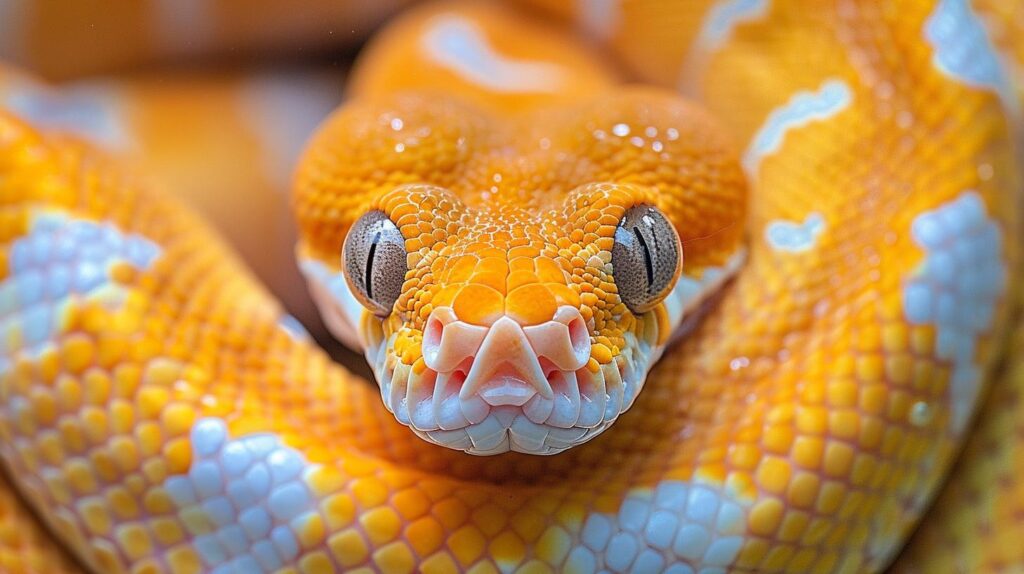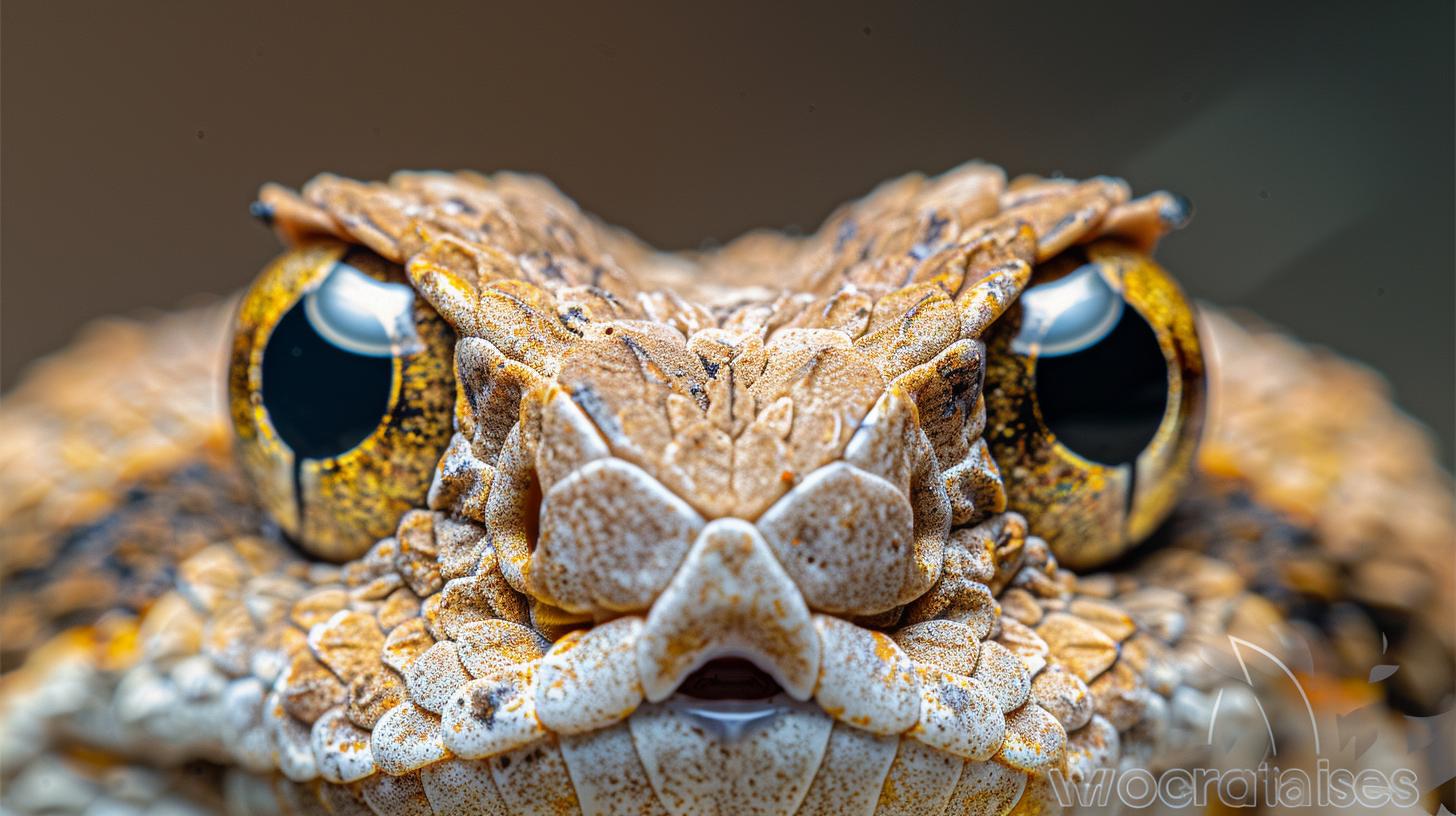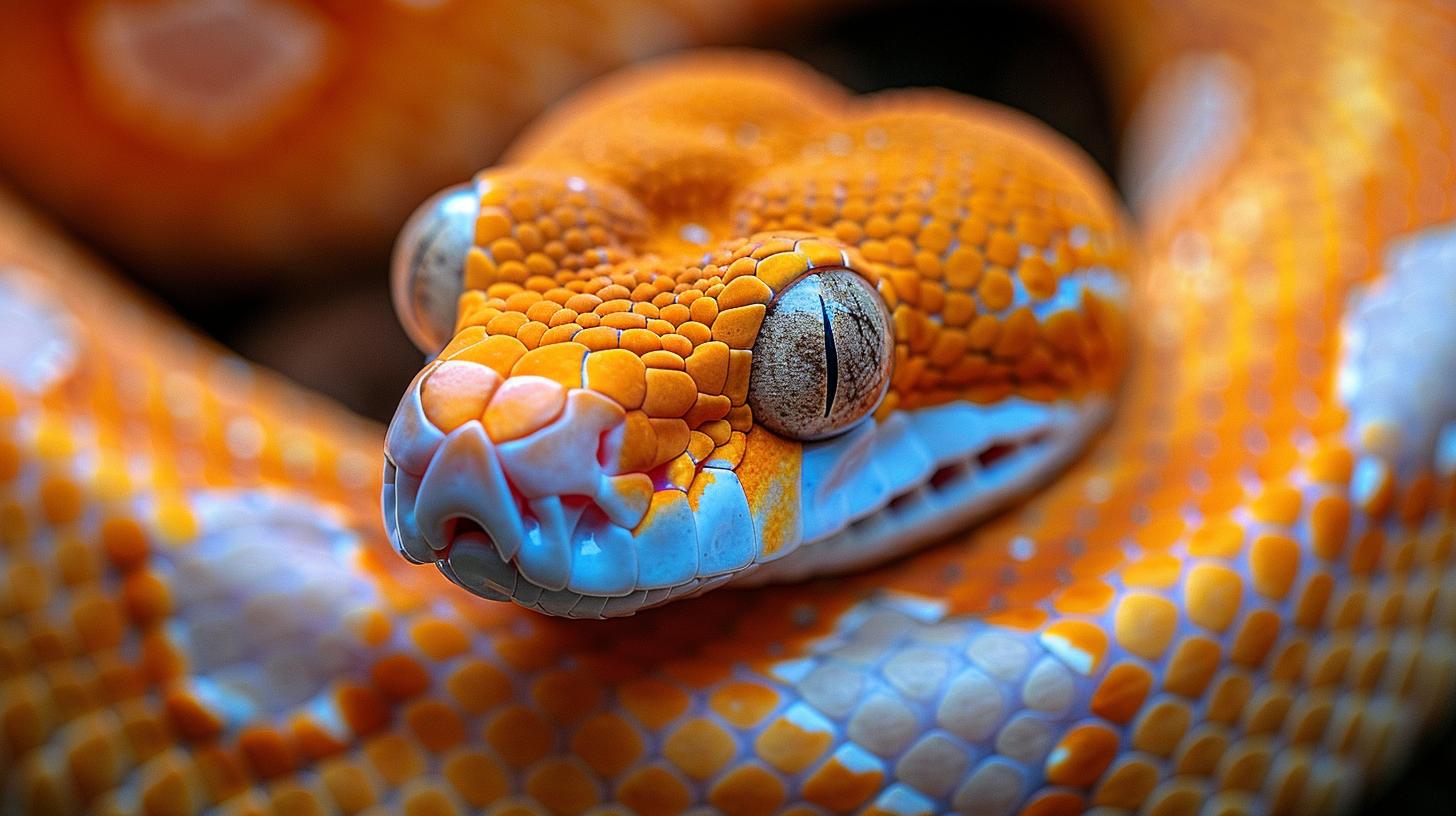Why Are These Treatments Effective for Snake Respiratory Infections?

Understanding Snake Respiratory Infections
In the realm of exotic pet care, the quest for effective snake treatments is paramount, especially when combating respiratory infections-a common ailment in these reptiles. Understanding the nuances of snake respiratory infections lays the foundation for recognizing signs, pinpointing causes, and grasping the urgency of immediate intervention to safeguard their well-being. Often masked behind subtle symptoms, a keen eye and an informed mind are crucial in early detection and treatment to prevent critical health deterioration.
When it comes to diagnosing such issues, precision is non-negotiable. The expertise of a seasoned reptile veterinarian becomes invaluable, as misidentification of the ailment could spell disaster for recovery efforts. This accuracy ensures that treatments target the infection effectively without exacerbating the condition or causing undue stress on the serpent. The distinction between bacterial infections and other causes necessitates an educated approach to diagnosis, underscoring why professional insights are indispensable in navigating this complex terrain.
Amongst various interventions, antibiotics emerge as a frontline defense against bacterial culprits behind respiratory distress. Yet, this weapon in our arsenal calls for judicious use under veterinary guidance to hit its mark effectively-with precise dosages preventing resistance and ensuring efficacy. Beyond pharmacological solutions, nebulization therapy represents a modern marvel in delivering treatment directly to where it's most needed: the lungs.
This gentle yet potent method enhances medication absorption while minimizing stress on our serpentine companions, streamlining their journey towards recovery. Together with environmental modification-adjusting humidity levels and temperature-the holistic approach fosters a conducive habitat that supports healing from within.
Diagnosing the Issue
The Crucial First Step: Getting the Diagnosis Right
The process of accurately diagnosing a snake's respiratory infection is akin to piecing together a complex puzzle. Each symptom and behavioral change offers clues, but without the expertise of a reptile veterinarian, these pieces can easily be misinterpreted. A misdiagnosis not only delays the administration of effective snake treatments, but it can also exacerbate the condition, leading to further health complications for the snake.
It's imperative to understand that respiratory infections in snakes can manifest through various symptoms including wheezing, mouth gaping, and excessive mucus production. However, these symptoms might also indicate other health issues beyond a respiratory infection. Thus, seeking professional diagnosis becomes paramount.
The Role of Expertise in Identifying Root Causes
A reptile veterinarian brings indispensable expertise to the table, employing specialized diagnostic tools such as endoscopy and radiography to peer into the internal workings of your slithering pet. These tools allow for an inside view that reveals much more than surface-level symptoms could suggest. For instance, what might seem like a respiratory issue could actually be an internal obstruction or even a parasitic invasion requiring a different treatment approach.
Furthermore, their seasoned eye can distinguish between bacterial, viral, or fungal causes of respiratory distress - each necessitating a unique treatment protocol. This precision in identifying the root cause underscores how crucial professional diagnosis is to pave the way for successful recovery.
Navigating Through Misdiagnosis Risks
Inaccurate diagnosis stands as one of the biggest threats to effective recovery from snake respiratory infections. For example, treating a fungal infection with antibiotics intended for bacterial infections not only fails to address the underlying problem but may also lead to antibiotic resistance over time. Moreover, improper use of medication due to misdiagnosis can lead to adverse side effects, complicating an already delicate situation.
Owners play a critical role by providing comprehensive observations on their pet's behavior and symptoms; however, this information must be interpreted within the broader context of professional veterinary knowledge. Ensuring accuracy from the beginning avoids these pitfalls and sets the stage for applying truly effective snake treatments
By emphasizing accurate diagnosis at every stage of care-starting from recognizing early warning signs to choosing tailored interventions based on specific pathogens identified-owners and veterinarians alike ensure that each step taken contributes positively towards healing rather than inadvertently causing harm.
The Role of Antibiotics in Treating Bacterial Infections
When dealing with bacterial infections in snakes, it's essential to understand the pivotal role antibiotics play in the treatment process. These infections can be particularly challenging to manage due to the unique physiology of snakes and the often subtle presentation of symptoms until the infection has advanced.
Prompt identification and treatment are crucial not only for the immediate well-being of the snake but also for preventing long-term health issues. The efficacy of antibiotics against bacterial causes of respiratory infections is significant, yet it emphasizes a disciplined approach under professional veterinary guidance to navigate potential complications, such as antibiotic resistance and ensuring that the medication targets the specific bacteria causing the infection.
Choosing the Right Antibiotic
The choice of antibiotic is key in managing bacterial respiratory infections effectively. This decision is typically informed by a combination of factors, including diagnostic testing like culture and sensitivity, which identifies the specific bacteria present and determines which antibiotics are most likely to be effective against them.
It's not about simply prescribing any antibiotic but finding the right one that can specifically target and eliminate the causative agents without contributing to antibiotic resistance. Such precision requires professional oversight from an experienced reptile veterinarian who understands both the nuances of snake metabolism and how different antibiotics interact within their bodies.
The Risks of Antibiotic Resistance
In an era where antibiotic resistance is a growing concern across all species, careful consideration must be taken when treating snakes with these medications. Misuse or overuse of antibiotics can foster resistant strains of bacteria, making subsequent treatments more challenging and limiting options available for effective snake treatments in their care arsenal.
Therefore, adherence to prescribed treatments, dosing schedules, and follow-up appointments for re-evaluation by a reptile specialist are critical components in responsibly managing these infections and mitigating risks associated with antibiotic resistance.
Professional Oversight: A Must
The complexity surrounding antibiotics' role necessitates professional guidance at every step. From accurate diagnosis to selecting an appropriate treatment plan-including type, dosage, and duration-veterinary expertise ensures that treatments align with best practices.

Moreover, a vet's intervention allows for monitoring progress during treatment phases to make timely adjustments if needed. They can also advise on holistic management approaches that complement effective snake treatments, such as environmental modifications or supplemental supportive care tailored specifically to aid recovery from respiratory infections.
In addressing bacterial respiratory infections in snakes, leveraging antibiotics wisely underpins success rates significantly while safeguarding against unintended consequences like resistance buildup. The synergy between targeted therapy choices based on vet diagnostics and preventive strategies underscores optimized health outcomes for affected reptiles within our care spheres.
Nebulization Therapy
The benefits of nebulization therapy are manifold. Firstly, it allows for targeted delivery of antibiotics or antifungal agents directly to where they are most needed, enhancing their effectiveness in combating pathogens responsible for the infection.
Secondly, this approach minimizes stress on the snake by avoiding more invasive administration routes such as injections or oral medications which can be particularly challenging with non-cooperative animals. Additionally, nebulization can be carried out with minimal physical handling of the snake, further reducing stress and promoting a quicker recovery.
- Direct delivery of medication to affected areas reduces recovery time.
- Minimized stress from less handling and invasive procedures
- Promotes faster onset of medication action due to efficient absorption
Moreover, incorporating nebulization therapy as part of a comprehensive treatment plan accelerates healing. It is essential, however, to consult with a reptile-savvy veterinarian who can prescribe the appropriate medication based on a correct diagnosis.
This step is crucial because using the wrong type of antibiotic or antifungal in nebulous form could be ineffective at best and harmful at worst. The veterinarian's expertise in determining whether bacterial or fungal pathogens are at play-and thus what type of medication should be aerosolized-is invaluable in these circumstances.
In addition to consulting veterinary guidance for effective antibiotic selection and dosage determination, maintaining optimal environmental conditions is pivotal during recovery periods; this includes ensuring adequate humidity levels and temperature, both factors that can significantly impact reptilian health especially during recuperation phases from respiratory ailments. Thusly engaging nebulous treatments while simultaneously managing habitat conditions fosters an environment conducive to healing and robustness against future infection risk bouts.
Nebulization therapy underscores how advancements in reptile medicine offer hope for owners seeking effective snake treatments against daunting respiratory infections. As veterinary science progresses in understanding reptiles' unique physiological needs, this method shines as a beacon showing promise not only for curing present distresses but also paving avenues towards prevention-oriented strategies which inherently involve lessened intervention intensity down evolutionary paths thus fortifying ecological balance candidatures across diverse biomes wherein snakes predominantly inhabit.
The Importance of Environmental Adjustments
When discussing effective snake treatments for respiratory infections, environmental adjustments emerge as pivotal elements often overlooked. The significance of creating an optimal habitat for a recovering snake cannot be overstressed. Altering the snake's environment in specific ways aids significantly in speeding up the recovery process, ensuring that the therapeutic interventions have the best chance of success. These changes typically involve managing humidity and temperature levels but extend to cleanliness and minimizing stress-inducing interactions.
Firstly, let's delve into why adjusting humidity and temperature is so crucial for ailing snakes. Respiratory infections can cause snakes considerable discomfort; thus, facilitating an environment that mimics their natural habitat as closely as possible is essential. For many species, this means maintaining:
- A humidity level between 50% to 70%, depending on the specific needs of the species
- A temperature gradient allowing them to thermoregulate effectively, with a cooler end at approximately 75°F (24°C) and a warmer basking area around 85°F to 90°F (29°C to 32°C)
Such conditions not only comfort the snake but also play an instrumental role in helping its immune system fight off infection. It's noteworthy that maintaining proper hygiene within the enclosure by regularly removing waste and disinfecting surfaces further protects against secondary infections that could complicate recovery.
Moreover, reducing stress is another imperative aspect often not given enough credence. Snakes experiencing stress can have weakened immune systems making them more susceptible to illness or hampering their recovery from existing conditions. Consequently, steps should be taken to ensure minimal disturbance during their recuperation period. This encompasses limiting handling of the snake to only when absolutely necessary and keeping its enclosure in a quiet, low-traffic area away from direct sunlight or loud noises.
Implementing these environmental adjustments fundamentally supports effective snake treatments, augmenting the efficacy of medicinal interventions like antibiotics or nebulization therapy by fostering an environment conducive to healing and recovery. Hence, while it might seem peripheral compared to medical treatments, fine-tuning a snake's living conditions is indeed core to their speedy and complete recovery from respiratory infections.
The discourse on effective treatment methods would be incomplete without considering how synergizing therapeutic strategies with targeted environmental modifications can dramatically influence outcomes. As such, in pursuing excellence in reptile care, particularly for those battling respiratory issues, adopting a holistic approach encompassing both medical treatment and environmental optimization stands as best practice-a theme we'll continue exploring in subsequent sections.
Supplementary Treatments and Supportive Care
In addition to the primary *effective snake treatments* for respiratory infections, such as antibiotics and nebulization therapy, there are several supplementary measures that can significantly contribute to a snake's recovery. One pivotal aspect is nutritional support. Ensuring that a sick snake receives appropriate and sufficient nutrition can be a challenge due to decreased appetite.

However, maintaining an adequate nutritional intake is vital for bolstering the reptile's immune system and facilitating quicker recovery. Providing easily digestible, high-quality food and even considering assist-feeding under veterinarian guidance can make a substantial difference in the recovery process.
Moreover, reducing stress levels plays a crucial role in supporting a snake's healing journey. Stress weakens the immune system and can exacerbate respiratory conditions, making it harder for snakes to fight off infections. Creating a calm, quiet environment is therefore essential.
This includes minimizing handling of the snake during its recovery period, ensuring the habitat maintains correct temperature gradients and humidity levels according to species-specific requirements, and avoiding any sudden changes in their environment. These adjustments help create an optimal setting for recovery by closely mimicking natural conditions which reduce stress and promote health.
Lastly, regularly cleaning and disinfecting the habitat cannot be overlooked as part of supportive care. Eliminating harmful pathogens from the living area prevents further complications or reinfection once the animal begins to show signs of improvement. This involves not only cleaning out waste but also regularly changing substrate and water while thoroughly disinfecting any hides or decor items used within their tank.
| Supportive Care Measure | Purpose |
|---|---|
| Nutritional Support | Bolsters immune system & facilitates recovery |
| Reducing Stress Levels | Creates optimal recovery environment & strengthens immune response |
| Habitat Cleaning | Prevents reinfection & eliminates harmful pathogens |
Integrating these supplementary treatments with primary medical interventions like antibiotics significantly enhances treatment efficacy. By focusing on providing comprehensive care that addresses both medical needs and environmental factors, owners can ensure their snakes not only receive *effective snake treatments* but also benefit from broader support targeting all aspects influencing their well-being during recovery periods.
Optimal Recovery Practices and Preventive Measures
In wrapping up our comprehensive guide on "Why These Treatments Are Effective for Snake Respiratory Infections," it's clear that the journey to recovery for a snake battling a respiratory infection is multi-faceted, requiring not just timely and accurate diagnosis but also a tailored treatment plan. From our exploration of antibiotic use to nebulization therapy, we've underscored the significance of professional veterinary intervention and the careful selection of effective snake treatments.
Moreover, environmental adjustments and supportive care emerge as foundational pillars in bolstering the efficacy of these treatments, illustrating how intricately linked the health of a snake is to its surroundings.
Understanding that recovery does not end with the cessation of symptoms, we delved into optimal practices for nurturing a snake back to robust health and preemptive strategies to shield them from future infections. Regular health assessments, vigilant habitat management, and informed, preventative measures stand out as essential steps in fortifying snakes against respiratory ailments. This holistic approach not only aids in achieving swift recoveries but also in cultivating environments where snakes can thrive, free from the shadow of recurrent infections.
As we draw this discussion to a close, let's pivot towards continued learning and proactive engagement with our serpentine companions' well-being. We invite you to sift through our website's vast repository of articles for further insights into reptile health care and more.
Whether you're seeking guidance on day-to-day management or specialized treatment options like those discussed today, our dedication is to equip you with knowledge that empowers you to provide unparalleled care for your reptilian pets. Dive into our resources today and step into a community committed to the flourishing life of every creature under your guardianship.
Frequently Asked Questions
What Is the Most Effective Treatment for Snakebite?
The most effective treatment for a snakebite is prompt medical attention where antivenom can be administered if necessary. Immediate steps include keeping the bitten limb immobile and at heart level, avoiding any food or beverages, and not attempting traditional first aid techniques like sucking out the venom or applying a tourniquet.
Receiving antivenom as soon as possible is crucial for venomous bites.
What Is the Medical Treatment for Snake?
Medical treatment for a snake bite primarily involves the administration of antivenom, which is specific to the venom type of the snake involved. Health care providers also focus on managing symptoms and preventing infection at the bite site through wound care.
In some cases, additional treatments such as pain relievers or antibiotics may be necessary depending on the patient's response to the antivenom and overall condition.
What 3 Things Should You Do if Bitten by a Snake?
If bitten by a snake, you should immediately move away from the area to avoid additional bites, keep calm to slow down the spread of venom through your body, and seek emergency medical assistance right away. It's also essential to remove any jewelry or tight clothing near the bite before swelling starts.
Remembering these steps could significantly influence your recovery process.
How Effective Is Snake Antivenom?
Antivenom is highly effective in counteracting snake venom when administered correctly and promptly after a bite occurs. Its success largely depends on factors including the type of snakebite, time elapsed since being bitten, and dosage received. While antivenom can prevent or significantly mitigate severe outcomes from envenoming, it must be given under medical supervision due to potential allergic reactions.
Can Garlic Cure Snake Bite?
Garlic cannot cure a snakebite, and relying on this method instead of seeking professional medical treatment can lead to dangerous consequences. While garlic has been historically considered by some cultures for its medicinal properties, there is no scientific evidence supporting its effectiveness against snake venom. Seeking immediate medical intervention remains paramount following a snakebite.
Why Can Humans Only Be Treated With Antivenom Once?
Humans are cautioned against receiving multiple treatments with certain types of antivenom over their lifetime due to the risk of severe allergic reactions known as anaphylaxis produced by immune system sensitization to foreign proteins found in these antivenoms during initial exposure—similarly underlying why other treatments prioritize careful dosing strategies minimizing exposure risks while maximizing therapeutic benefits during subsequent envenomations if needed with close monitoring.
Leave a Reply
You must be logged in to post a comment.